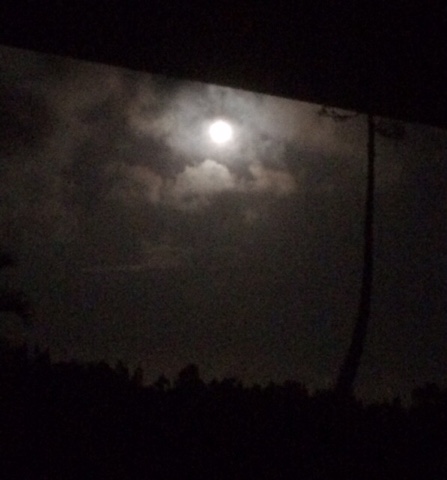Early this morning we had gotten ready for our mini Thanksgiving week vacation, shared conversation over coffee with a couple of friends down at the local coffee bar, then swung by the farm on our way to the airport. Smoke! There was a fire somewhere nearby our place. In fact, it was right next door. Yikes! Super yikes! Just as we got up to our gate, the neighbor across the street was heading out her driveway riding her tractor with the front scoop. She called out that there was a fire. Our neighbor is one gutsy woman, heading out to do battle on her own.
Within a minute her husband arrived in his pickup, having been off the farm not far away. Grabbing my phone, I started calling neighbors, trying to locate the source of the smoke and to sound the alarm. No luck. The husband headed up one hui driveway while I headed up the other. Surveying my neighbor's land, I figured it was somewhere in the trees but from my angle I couldn't see. So I charged back out and headed up my own driveway, discovering that one of my next door neighbor's buildings was afire. Ok, not something we could handle. Time to call 911.
Now what to do? Head for the airport? No way. Not until that fire was out.
Waiting for the fire trucks, my mind was racing. Boy, I sure was glad that we had gotten a good rain last night. 0.37", more than were had in the past two months or so. Everything was well wetted, and still soaking wet for the first time in weeks, so we lucked out there. But it was windy. That's bad.
Next I went down a mental check list. Were things in place for a sudden evacuation if need be?
... The livestock in the pastures would be safe because of the direction of the wind.
... I could release the chickens if needed.
... I could quickly evacuate the dogs by loading the livestock transport cage into the truck bed, then loading up the dogs. They all eagerly jump into the track bed.
... Our important papers were all in the bugout box. Cash, wallets, and car keys centrally located in their designated location. Guns and ammo in their cases, proper location, ready to be grabbed in a hurry.
... Cats. Finding them all would most likely be impossible, but being loose, they would probably be ok. But I realized that I no longer had enough carrying boxes for them all. So, I could use pillowcases if I had to. Why had things gone wrong? Originally I had enough trap cages, one for each cat. But over time I had lent them out for people to use for trapping ferals for the spay clinics. Thus two had been damaged beyond repair and two were "lost", never to be returned.
Now I've discovered that I need to make a correction in order to be prepared for an emergency evacuation in the future. No more being the nice guy and letting people borrow my transport cages. And I need to go out and buy four trap cages to return to the total number that I need for all my cats.
One other thing. I learned that I would be quite unhappy if I lost certain pieces of my veterinary gear and electronic gadgets if the was a forest fire. I realized that my other possessions I could live without or replace. So I plan to place the precious items in a transportable case/box along with the bugout box, cover it with a table cloth and use it as a stand for stowing my iPad, laptop, & shoulder bag. That way they could be easily accessed to be used in daily life, but also ready for bugging out.
Ok now. You want to know things ended? The fire company put out the fire and all was under control within a half hour. We left for the airport after two of the neighbors reassured us that they would call us immediately if the fire started back up. But we still phoned them from the airport to make sure before boarding the plane. Whew. What a way to start a vacation that was suppose to be relaxing.

















































